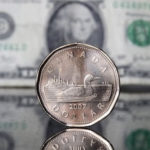Yesterday’s trade saw EUR/USD within the range of 1.1336-1.1388. The pair closed at 1.1360, up 0.18% on a daily basis and extending gains from Tuesday.
At 8:01 GMT today EUR/USD was down 0.06% for the day to trade at 1.1353. The pair touched a daily low at 1.1348 at 7:45 GMT.
Fundamentals
Euro area
Change in German unemployment
The number of the unemployed people in Germany probably dropped by 10 000 in February, according to the median forecast by experts, following a decrease by 8 000 during January. If so, this would be the fifth consecutive month of declines. A decrease implies that consumer spending may be more active, while the latter is tightly related to economic growth. An increase in the number of the unemployed suggests the opposite.
At the same time, the seasonally adjusted rate of unemployment in the country probably remained unchanged at 6.5% in February, according to expectations. This has been the lowest rate in more than seven years.
The seasonally adjusted harmonized jobless rate fell for a tenth consecutive month in December to reach 4.8%. It has been the lowest rate since the fall of 1981. The number of unemployed persons dropped 1.5% to 2.01 million in December compared to November, while employment rose 0.2% to 40.05 million. The rate of employment in the country remained steady at 65.2%.
The unemployment rate for people aged between 15 and 24 continued to decrease in December, reaching 7.2% from a revised 7.3% in the prior month.
In case the number of people unemployed decreased more than projected and the unemployment rate dropped, this would certainly support demand for the euro. The Federal Statistics Office will release the official numbers at 8:55 GMT.
Italian Retail Sales
Annualized retail sales in Italy probably decreased at a pace of 0.4% in December, according to the median estimate by experts, following another 2.3% drop in November. If so, this would be the eighth consecutive month of decline in sales, but yet the least drop since May 2014, when a 0.4% slump was reported. In monthly terms, retail sales probably rose 0.3% in December, following a 0.1% uptick in November. If so, this would be fastest monthly rate of sales growth since May 2014, when a 0.6% gain was registered. This indicator reflects the change in the total value of inflation-adjusted sales by retailers in the country and provides key information regarding the consumer spending trend, while the latter is a key driving force behind economic growth. In case the retail sales index dropped at a faster-than-expected pace, this might have a limited bearish effect on the euro. The National Institute of Statistics (Istat) is expected to release the official report at 9:00 GMT.
Economic Sentiment Indicator (ESI)
The final value of the consumer confidence index probably confirmed the preliminary reading of -6.7, which was reported on February 19th. If so, this would be the highest level of confidence since October 2007, when the indicator stood at -6.0. The final index for January came in at -8.5, or in line with the preliminary value. The indicator measures consumer confidence on a scale of -100 to +100. A reading of -100 suggests a lack of confidence, zero means neutrality and a reading of +100 indicates extreme levels of confidence. The index reflects the level of optimism, which consumers have about economic development in the region. The Business and Consumer Survey is conducted by phone and includes 23 000 households in the Euro area. The questions asked stress on current economic and financial situation, savings intention and also on expected developments regarding consumer price indexes, general economic situation and major purchases of durable goods. This indicator is one of the five major components, that comprise the Economic Sentiment Indicator (ESI).
The ESI probably continued to improve in February, reaching 101.9, according to expectations, from a reading of 101.2 in January. If so, this would be the highest level since July 2014, when the index was reported at 102.1. The Economic Sentiment Indicator (ESI) is a composite indicator, consisting of five sectoral confidence indicators with different weights: Industrial confidence indicator, Services confidence indicator, Consumer confidence indicator, Construction confidence indicator and Retail trade confidence indicator. The ESI is calculated as an index with a mean value of 100.0 and standard deviation of 10 over a fixed standardized sample period.
Higher confidence usually implies greater willingness to spend, including large-ticket purchases, while consumer spending is a key factor behind economic growth. Therefore, in case the ESI climbed more than anticipated, this would cause a certain bullish impact on the euro. The European Commission is expected to release the official ESI reading at 10:00 GMT.
United States
Consumer Inflation
The annualized consumer inflation in the United States probably continued to decelerate in January, falling to -0.1%, according to market expectations, from 0.8%, registered in December. If so, this would be the lowest rate since October 2009, when an inflation of -0.2% was reported. In monthly terms, the Consumer Price Index (CPI) probably dropped for a third straight month in January, down 0.6%. If so, this would be the largest monthly decrease since December 2009, when consumer prices fell 0.8%. In December compared to November 2014 the CPI slumped 0.4%.
In December energy prices plunged 10.6% year-on-year. Food prices, on the other hand, rose at an annualized rate of 3.4% during the same month, which marked the most considerable annual gain since February 2012, according to the report by the Bureau of Labor Statistics.
The CPI is based on a basket of goods and services bought and used by consumers on a daily basis. In the United States the Bureau of Labor Statistics (BLS) surveys the prices of 80 000 consumer items in order to calculate the index. The latter reflects prices of commonly purchased items by primarily urban households, which represent about 87% of the US population. The Bureau processes price data from 23 000 retail and service businesses.
The CPI includes sales taxes, but excludes income taxes, costs of investments such as stocks and bonds and sales prices of homes.
The annualized core consumer inflation, which is stripped of prices of food and energy, probably remained steady at 1.6% in January. This has been the lowest annual core inflation since February 2014. It is usually reported as a seasonally adjusted figure, because consumer patterns are widely fluctuating in dependence on the time of the year. The Core CPI is a key measure, because this is the gauge, which the Federal Reserve Bank takes into account in order to adjust its monetary policy. The Fed uses the core CPI, because prices of food, oil and gas are highly volatile and the central bank’s tools are slow-acting. In case, for example, prices of gas surge considerably, this could lead to a high rate of inflation, but the central bank will not take action until this increase affects prices of other goods and services.
If the CPI tends to distance from the inflation objective, set by the Federal Reserve and considered as providing price stability, or 2%, this will usually reduce the appeal of the US dollar. However, quite high rates of inflation (well above the central bank’s inflation target) can be harmful to economy and as a result, this may lead to the loss of confidence in the local currency.
The Bureau of Labor Statistics is to release the official CPI report at 13:30 GMT.
Durable Goods Orders
Durable goods orders in the United States probably increased 1.9% in January compared to a month ago, according to the median forecast by experts. If so, this would be the first gain in three months. In December orders for manufactured durable goods dropped at a pace of 3.4%. New orders decreased by USD 8.1 billion to USD 230.5 billion in December, down in four of the last five months.
Shipments of manufactured durable goods increased by USD 2.6 billion (1.1%) to USD 246.8 billion in December, following a 0.7% drop in November. Inventories of manufactured durable goods in December, up in twenty of the last twenty one months, rose by USD 2.0 billion (0.5%) to reach USD 410.8 billion. Non-defense new orders for capital goods in December fell USD 7.9 billion (9.7%) to USD 73.3 billion, according to data by the US Census Bureau.
Durable goods orders, as an indicator, gauge the strength of US manufacturing sector and represent a major portion of the nations factory orders. This is a closely watched report on manufacturing activity, because durable goods are the first type of goods to be affected by an economic downturn or upturn.
Durable goods are designed to last three or more years and encompass aircraft, automobiles and buses, cranes, machine parts, appliances etc. More than 85 industries are represented in the sample, which covers the entire United States. The logic behind this indicator is that consumers need to be very optimistic in order to buy an automobile in comparison with, for example, first necessities such as food or clothing. Therefore, durable goods are among the first goods, which a consumer may abstain from purchasing, in case overall economic activity begins to contract. The same is valid for company purchases. During a recession, an airliner is less likely to purchase new planes and as factory output contracts, it is less likely to purchase new machines.
Durable goods orders, which exclude transportation, probably rose 0.5% in January. If so, this would be the first gain in the past four months. In December orders were down 0.8%. Large ticket orders, such as automobiles for civil use or aircraft, are not present in the calculation, as their value may be in a wide range. This way the index provides a more reliable information in regard to orders for durable goods.
In case orders increased at a faster-than-projected pace, this would certainly have a bullish effect on the greenback. The US Census Bureau is scheduled to release the official data at 13:30 GMT.
Pivot Points
According to Binary Tribune’s daily analysis, the central pivot point for the pair is at 1.1361. In case EUR/USD manages to breach the first resistance level at 1.1387, it will probably continue up to test 1.1413. In case the second key resistance is broken, the pair will probably attempt to advance to 1.1439.
If EUR/USD manages to breach the first key support at 1.1335, it will probably continue to slide and test 1.1309. With this second key support broken, the movement to the downside will probably continue to 1.1283.
The mid-Pivot levels for today are as follows: M1 – 1.1296, M2 – 1.1322, M3 – 1.1348, M4 – 1.1374, M5 – 1.1400, M6 – 1.1426.
In weekly terms, the central pivot point is at 1.1371. The three key resistance levels are as follows: R1 – 1.1463, R2 – 1.1546, R3 – 1.1638. The three key support levels are: S1 – 1.1288, S2 – 1.1196, S3 – 1.1113.





